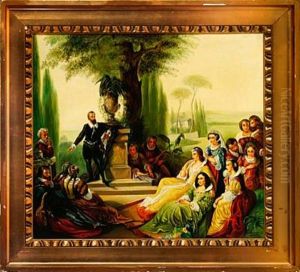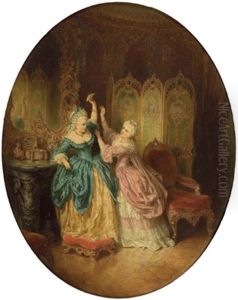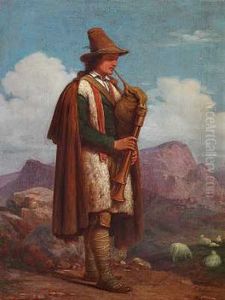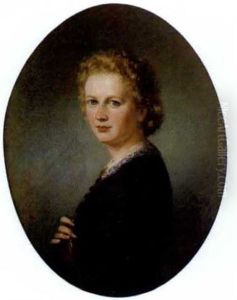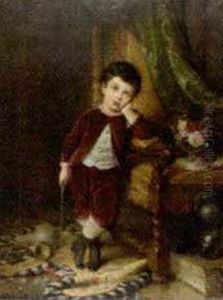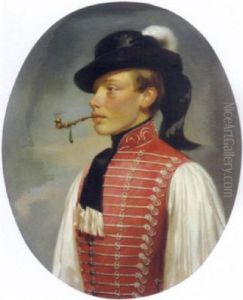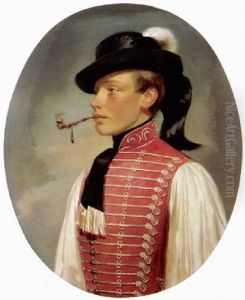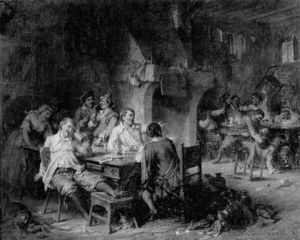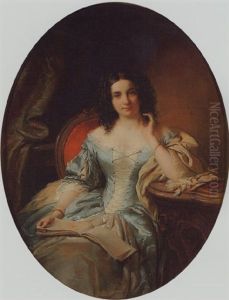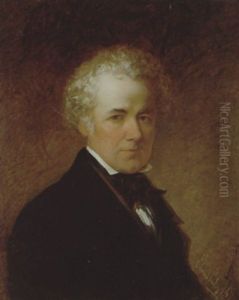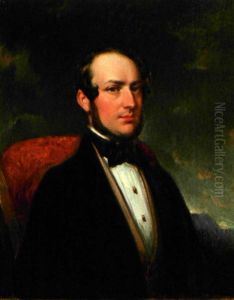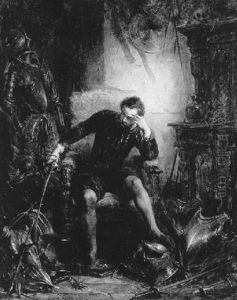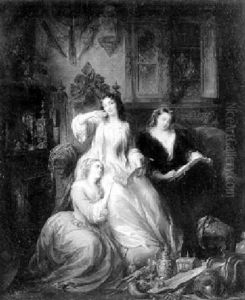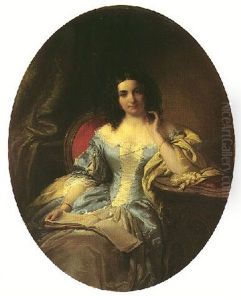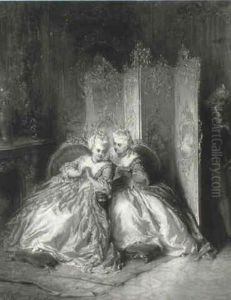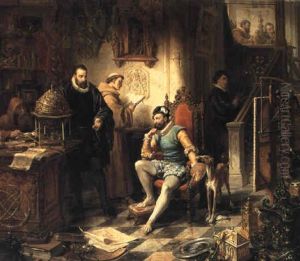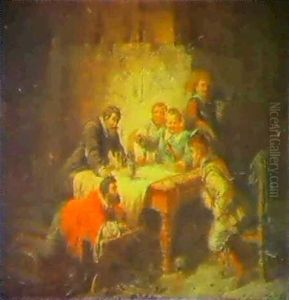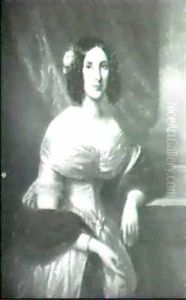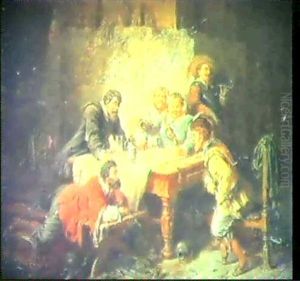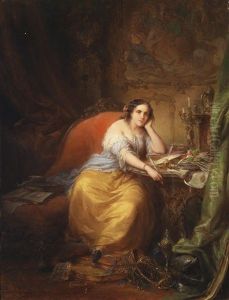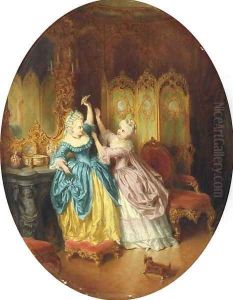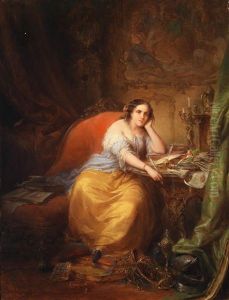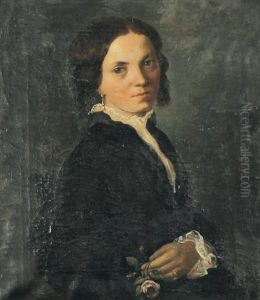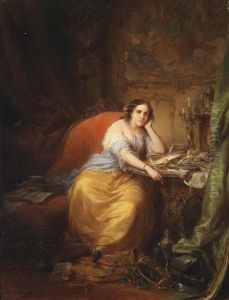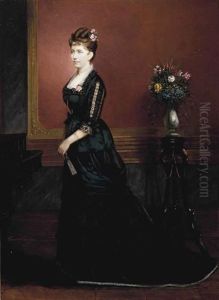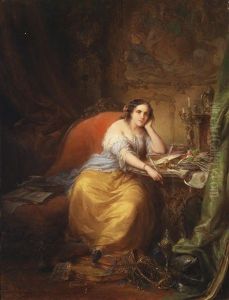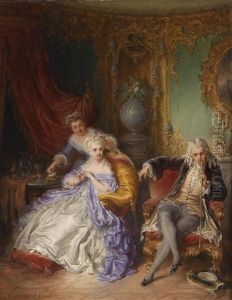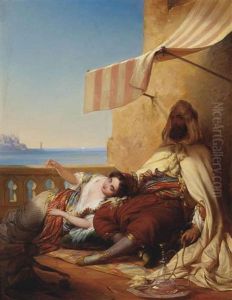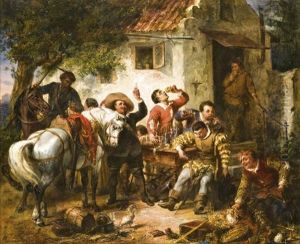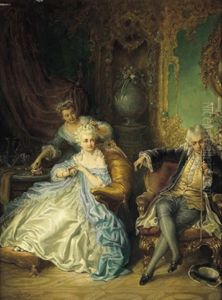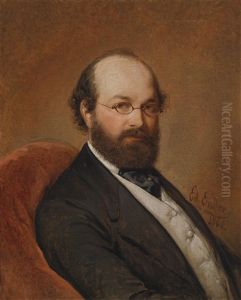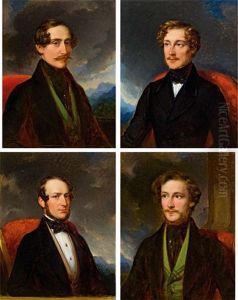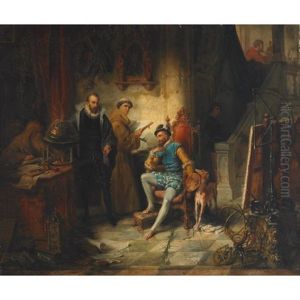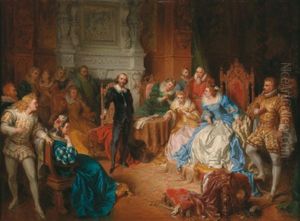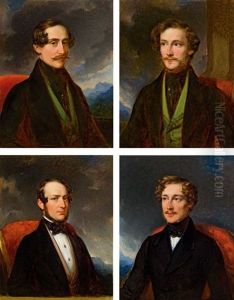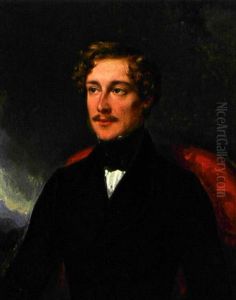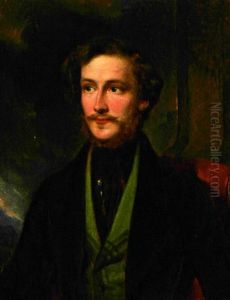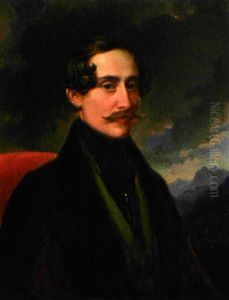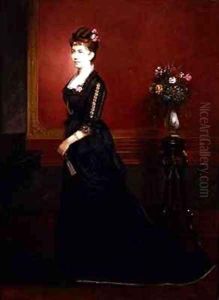Edouard Ender Paintings
Édouard Ender was an Austrian painter and illustrator born on March 3, 1822, in Bratislava, which was then part of the Austrian Empire. He hailed from a family of artists; his father Johann Ender was a well-known portraitist, and his brother Thomas Ender was a landscape painter. Édouard's artistic lineage provided him with a rich environment that nurtured his artistic talents from an early age.
Ender studied at the Academy of Fine Arts in Vienna, where he was influenced by the Biedermeier style prevalent at the time—a style characterized by a sense of realism and an emphasis on the middle class and domestic life. He also received guidance from his father and brother, which helped him refine his skills in portraiture and genre painting.
Throughout his career, Ender was known for his historical and genre scenes, as well as his ability to capture the likeness and character of his subjects in portraits. He often depicted scenes from everyday life, imbuing them with a sense of intimacy and attention to detail. Ender was adept at using light to create mood and atmosphere in his paintings, a technique that added to the narrative quality of his work.
In addition to painting, Ender also worked as an illustrator, creating images for books and periodicals. This work expanded his reach and allowed his art to be disseminated more widely. Despite his skills and the quality of his work, Ender did not achieve the same level of fame as some of his contemporaries. Nevertheless, his contributions to the Austrian art scene during the 19th century were significant.
Édouard Ender's career was marked by a dedication to portraying the world around him with authenticity and detail. He exhibited his work in various venues, including the prestigious Vienna Academy exhibitions, and received commissions from notable patrons. Ender's legacy is preserved in the collections of several European museums, where his paintings continue to be appreciated for their historical value and craftsmanship.
Ender passed away on December 28, 1883, in Paris, France. His work remains a testament to the Biedermeier period's focus on simplicity, elegance, and the burgeoning middle-class sensibility that characterized early to mid-19th century European art.
